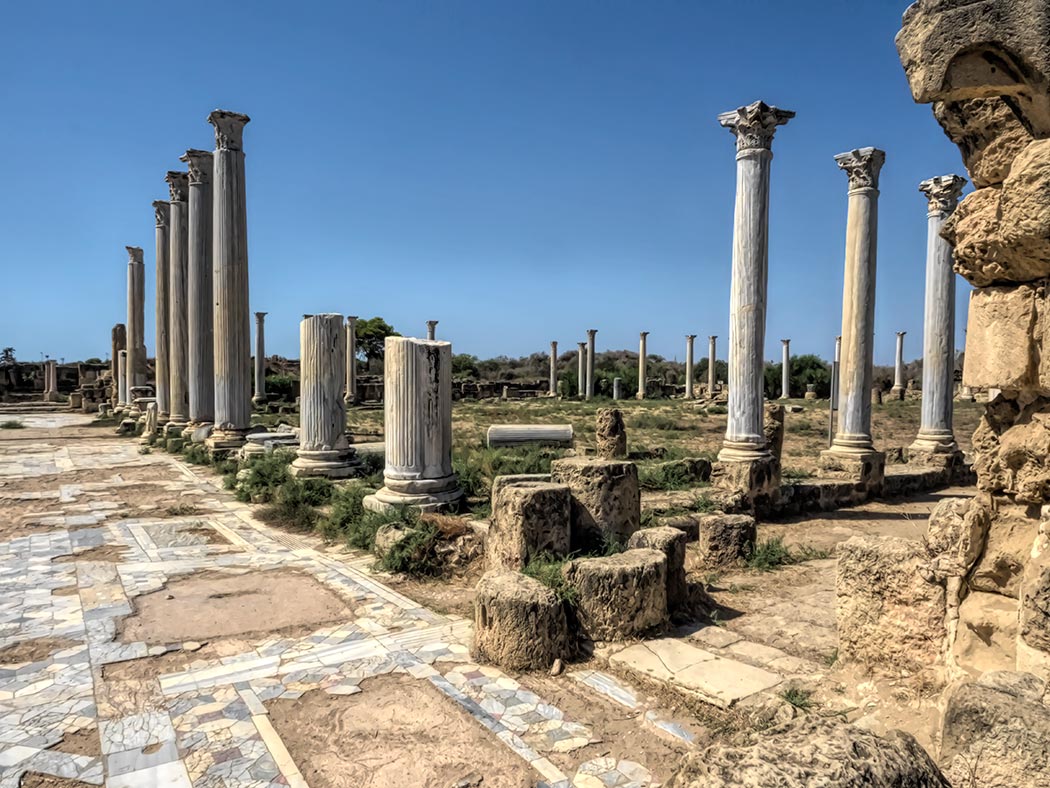On the Mediterranean island of Cyprus, these Corinthian columns mark the site of the ancient city-state of Salamis. Believed to have been founded in 1100 BC by a Greek prince who fought in the Trojan War, Salamis was the original capital of Cyprus. Over the centuries it was conquered by Assyrians, Egyptians, Persians, Romans, and finally, Ottomans, who destroyed the city in 674 AD. Gradually, blowing sand buried all but the tops of these columns. The site was constantly looted for antiquities and building materials for the next 1,300 years, until the Department of Antiquities began excavations in 1952.
Today Salamis is a place of pilgrimage for Christians due to its reference in the Bible: “When they (Saint Paul and Saint Barnabas) arrived at Salamis, they proclaimed the word of God in the Jewish synagogues. John was with them as their helper.” (Acts 13:5). The columns in the above photo surround what was once a colonnaded palaestra (gymnasium) where wrestling was likely taught. Additionally, archeologists have unearthed a theater with 50 rows of seats for up to 15,000 spectators, an extensive system of Roman baths, and a complex of arched tombs for burials of noblemen. Still, a large portion of the site remains unexcavated and no one knows what lies below the eucalyptus-crowned hills that surround the unearthed ruins.


When I visited the area, in 1968/9, there were life sized carved stone statues of nude males with many extremities vandalised. But the damage did not detract from the craftsmanship of the figures.
How interesting George. I sure didn’t see anything like that!